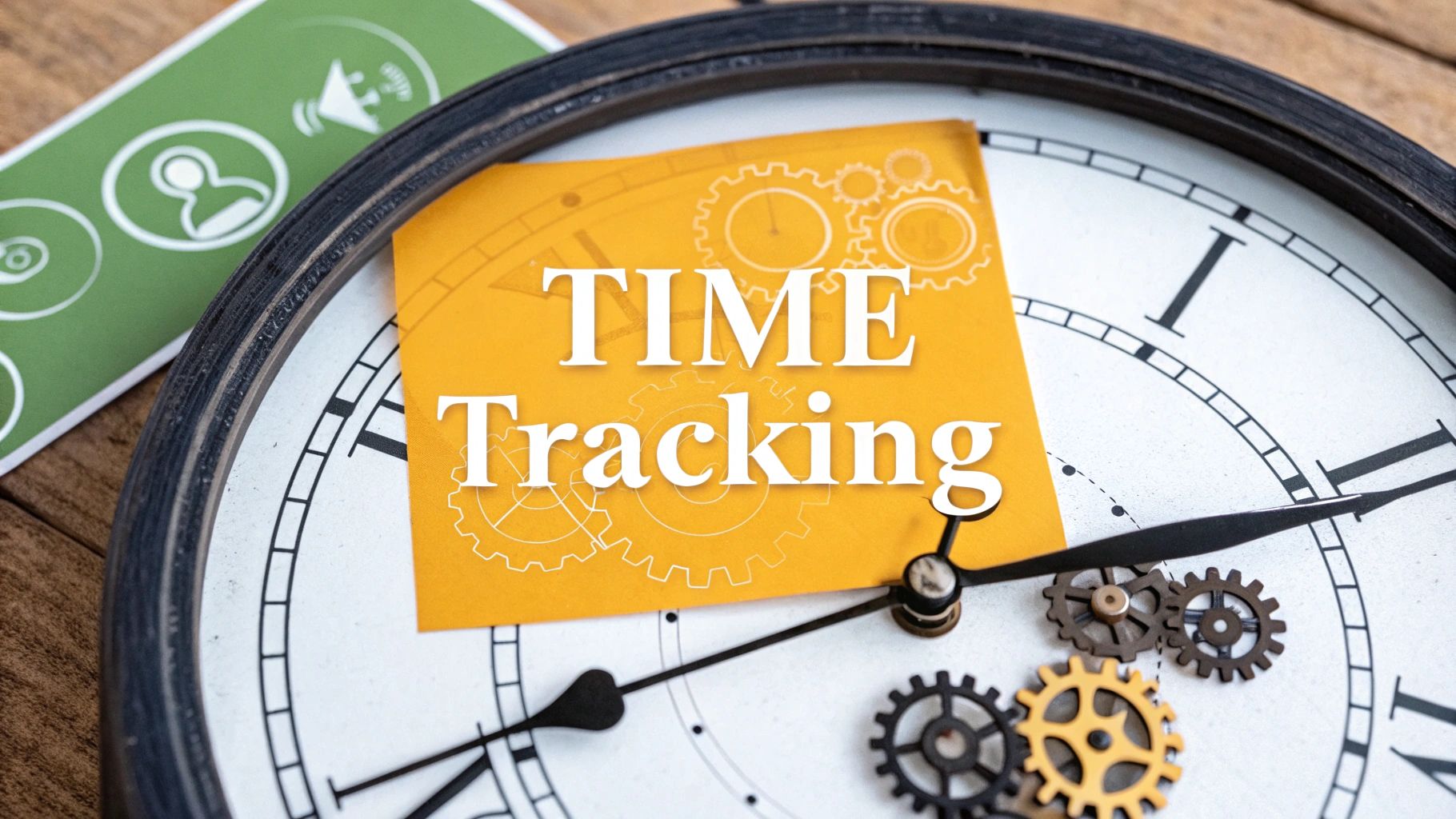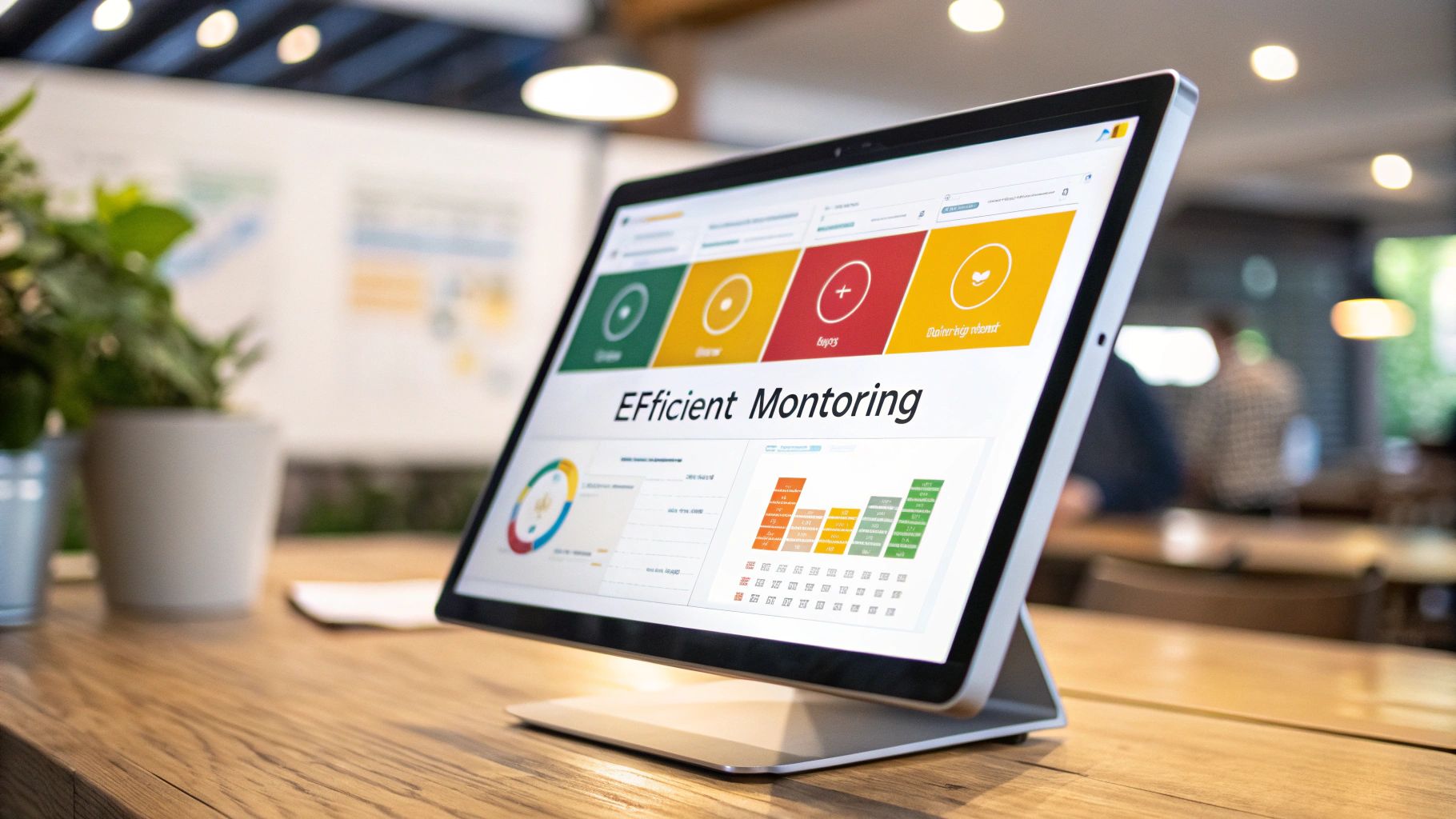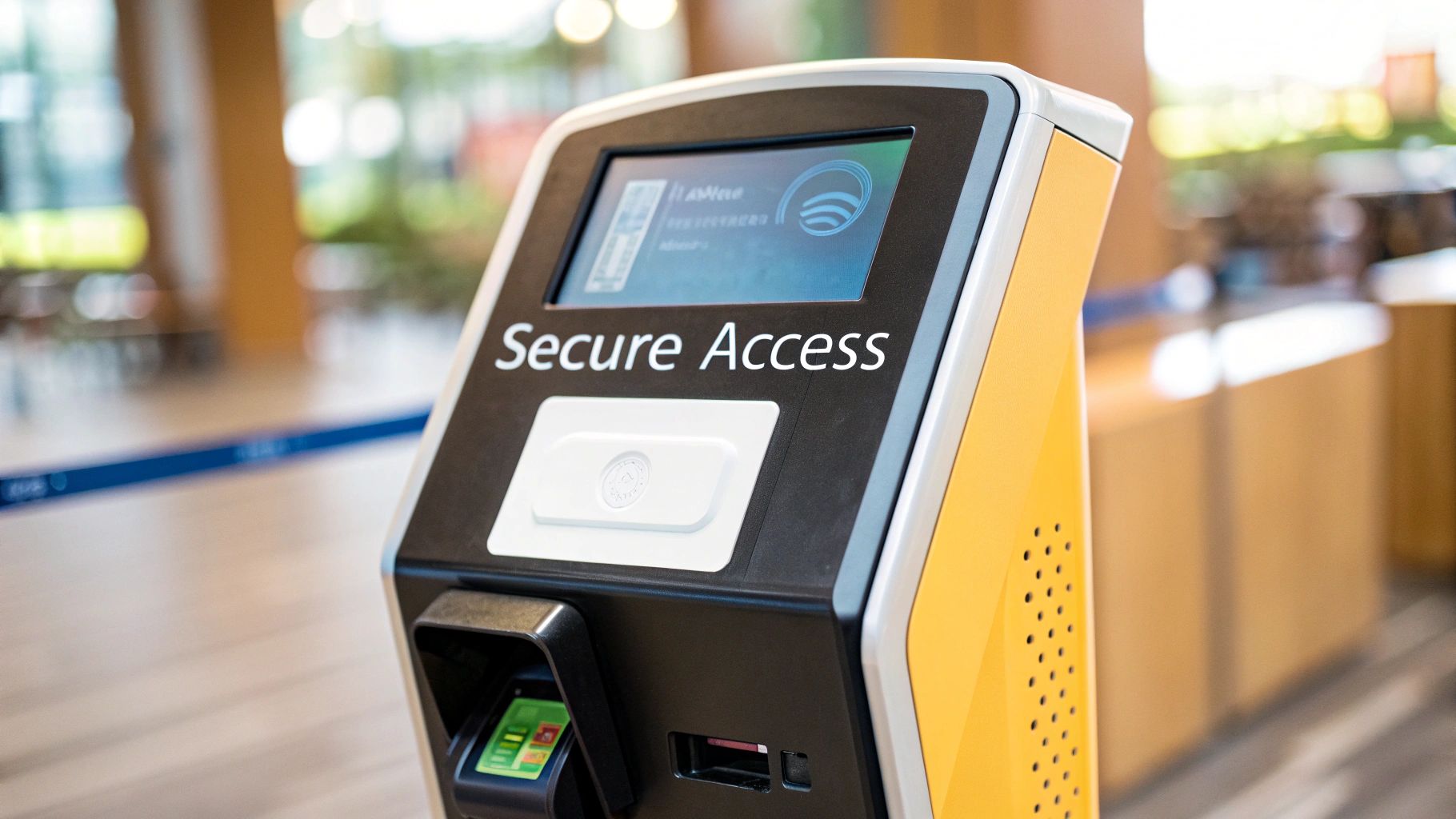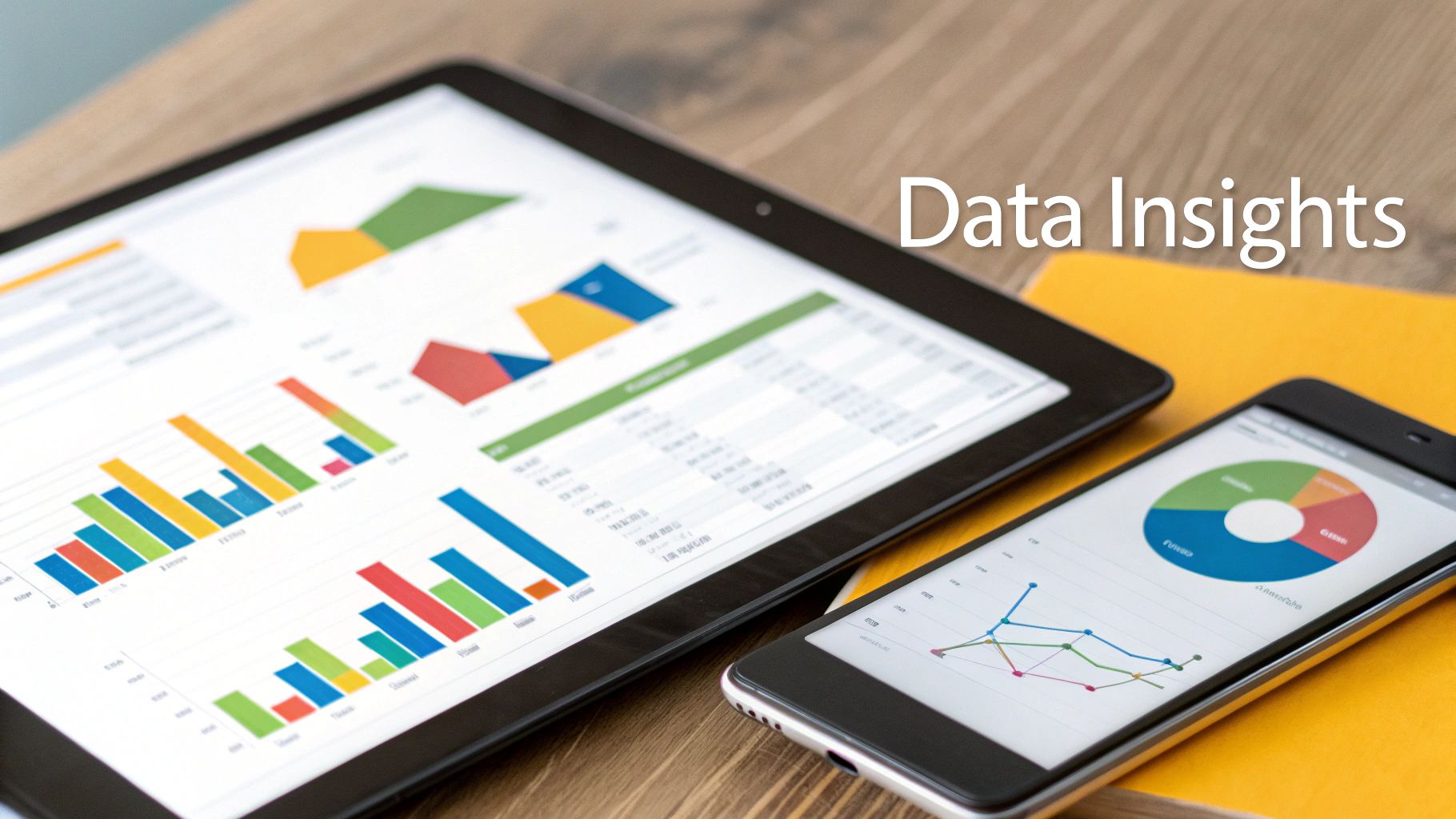From our resource library for organizational scheduling and management.
The Ultimate Guide to Clocking In and Out Systems: Modern Solutions for Time Tracking

The Evolution of Time Tracking: From Mechanical to Digital
The story of tracking employee time shows how far we've come from basic paper logs to today's digital systems. In the early days, businesses relied on handwritten records and direct supervision - methods that often led to payroll mistakes and attendance tracking problems. These limitations sparked the search for better solutions.
The modern clocking in and out system has its roots in the late 19th century. In 1888, inventor Willard L. Bundy created the first mechanical time clock - a device that let workers punch paper cards to record their arrival and departure times. This simple but effective system brought new accuracy to time tracking and made payroll calculations much more reliable. Learn more about this history here: Charting the Evolution of Time and Attendance Systems
The Rise of Electronic Systems
By the mid-20th century, electronic time clocks began replacing the old mechanical models. These new systems swapped paper cards for electronic ones, reducing errors and making data collection smoother. The electronic systems could also handle overtime calculations and other payroll tasks automatically - saving businesses both time and money.
The Digital Age of Time Tracking
The next big change came with computer systems and cloud technology. Modern clocking in and out systems do much more than just record times - they connect with other business tools like payroll and HR software, offer real-time data access, and create automated reports. This helps businesses see the full picture of how their workforce operates. For more details, check out: The Ultimate Guide to Apps for Clocking In
Modern Features and Benefits
Today's time tracking systems, like Acroroster, pack impressive features that go far beyond basic punch cards. Key advances include:
- Biometric scanning for secure identity verification
- GPS tracking to confirm location
- Mobile access for flexibility
- Real-time data and reports
- Direct integration with payroll systems
These tools give businesses clear insights into attendance patterns, productivity levels, and labor costs. The automated reporting also helps companies follow labor laws correctly. This evolution in time tracking has given companies both better efficiency and valuable data they can use to make smart decisions about their workforce.
The Digital Revolution in Time Tracking

The shift from mechanical time clocks to digital systems happened gradually through many small steps forward. These changes completely changed how companies handle employee time tracking. This progression set up the foundation for the modern clocking in and out systems we use today. Looking back at this journey helps us better understand our current tools.
From Electronic to Digital: A Gradual Transformation
When electronic time clocks appeared in the mid-1900s, they marked real progress. These systems replaced paper cards with electronic ones, which meant fewer errors and easier data collection. They could automatically calculate overtime - an early taste of what automation could do. This opened the door for bigger improvements ahead.
The 1970s and 1980s brought major changes to time tracking. Companies started using electronic time clocks that didn't need punch cards anymore. Major manufacturers like Simplex Time Recorder, Cincinnati Time Equipment, and Kronos created systems that could take data from electronic cards and send it straight to payroll computers. These machines could track overtime and calculate tax withholdings. Big names like Marriott Hotels, Filene's Basement, and Montgomery Ward quickly adopted these new tools. Learn more: The Evolution of Employee Time Tracking
The Impact of Cloud Computing and Mobile Technology
The biggest changes came with computers and cloud technology. They turned the basic clocking in and out system into a complete workforce management tool. Cloud systems let managers see data right away and work smoothly with other business software like payroll and HR systems.
The Mobile Workforce and Beyond
Mobile phones pushed things even further by letting employees clock in from anywhere. This works great for companies with remote workers or traveling staff. These mobile tools often include GPS tracking, which helps verify where people work and makes time tracking simpler. Mobile access has changed what we expect from clocking in and out systems and shown new ways to manage work time better.
Essential Features of Modern Clocking Systems

A good clocking in and out system does much more than track employee time. Modern systems pack useful features that help businesses run smoothly and make smart staffing decisions. Let's look at the key features that make today's time tracking systems so effective.
Biometric Authentication
Fingerprint and facial recognition add an extra layer of security to time tracking. These systems prevent employees from clocking in for each other and ensure only authorized staff can access the system. The process is quick and simple - just a quick scan and you're done.
Mobile Accessibility
Staff can now clock in using their phones or tablets, perfect for remote work and field operations. Whether someone's working from home, visiting clients, or moving between job sites, they can easily record their hours. This flexibility helps both employees and managers stay on top of time tracking.
GPS Tracking
For teams that work across different locations, GPS tracking is a game-changer. The system records where employees clock in and out, making it easier to track time spent at each job site. This helps with accurate billing and job costing.
Automated Reporting
Say goodbye to manual timesheets - modern systems generate reports automatically. You get instant access to attendance records, time-off requests, and payroll data. These reports help spot attendance patterns and track labor costs without the hassle of spreadsheets or paper forms.
Integrations
A good time tracking system works smoothly with your other business tools. When it connects to your payroll and HR software, data flows automatically between systems. No more copying numbers by hand or fixing data entry mistakes. Some systems, like Acroroster, let you customize how it connects to your existing databases.
Evaluating Feature Sets
When picking a time tracking system, check for these important features:
- Room to grow: Will it support your business as you add more employees?
- Legal requirements: Does it follow workplace laws in your area?
- Easy to use: Can employees and managers figure it out quickly?
- Good support: Is help available when you need it?
The right time tracking system makes a real difference in how smoothly your business runs. Take time to compare features and find one that fits your specific needs. A good system helps your team stay productive while making management easier.
Selecting the Perfect System for Your Organization

Picking the right time and attendance system can make or break your workforce management. While there are many options available, finding one that fits your organization's specific needs is key. Here's what you need to know to make a smart choice.
Understanding Your Needs and Requirements
Start by taking a close look at what your organization actually needs. Here are the main things to think about:
- Industry Requirements: Each field has its own scheduling quirks - healthcare needs 24/7 coverage, while retail might need flexible shifts. Make sure your system can handle these specific demands.
- Team Size: The bigger your team, the more robust your system needs to be. Pick something that can grow with you.
- Tech Setup: Your new system should work smoothly with the tools you already use, like your HR software and payroll system. Good connections between systems save hours of manual work.
Looking at Vendor Track Records
Take time to research potential vendors thoroughly. A vendor's past performance and customer feedback tell you a lot about what to expect.
- Help When You Need It: Check what kind of training and support they offer. Good support makes the switch much smoother.
- Room to Adjust: The system should be flexible enough to change as your needs change.
Understanding All the Costs
Look beyond just the initial price tag. The real cost to own the system includes:
- Setup fees and monthly/yearly charges
- Ongoing support and maintenance costs
- Future upgrade costs as your team grows
Learning from Others' Experience
Look at similar organizations that have already gone through this process. Their successes and mistakes can guide your decision. Read also: How to master choosing a scheduling program and transform your workforce.
Watch Out for These Mistakes
Many organizations rush the setup process or pick systems that lack proper support. Taking your time to choose carefully now prevents headaches later and helps your team work better together.
Winning Implementation and Change Management Strategies
Moving to a new time tracking system affects everyone in an organization. Success depends on making the transition easy and comfortable for your team. Good planning and a focus on the human side of change will help ensure your new system delivers its full benefits.
Planning for Success: Key Considerations
Before you start using your new system, take time to plan these essential elements:
- Clear Communication: Tell your team why you're making the change, what benefits the new system brings, and how it will fit into their daily work. Being open and honest helps build trust and reduces worry about new technology.
- Hands-on Training: Give everyone a chance to practice using the new time tracking system. Include different ways to learn - some people prefer written guides while others learn better from videos or in-person demos. Make sure there's time for questions.
- Managing Concerns: Some team members may worry about the change. Listen to their concerns, explain the benefits clearly, and involve them in testing the system. When people feel heard and included, they're more likely to support the change.
- Smart Timing: Plan your rollout carefully with enough time for testing and training. Starting with one department before expanding to others helps catch any issues early.
Implementation Best Practices
Follow these proven steps for a successful launch:
- Test Group: Begin with a small team to try out the system and spot any problems. Their feedback helps make the wider rollout smoother.
- Launch Support: Have experts ready to help during the first few weeks. Quick solutions to problems keep everyone positive about the change.
- Follow-up Meetings: Check in regularly with your team to hear how things are going. Show that you value their input and keep improving based on their experience.
Measuring Success and Maintaining Momentum
Track these key areas to see how well your new time tracking system is working:
- Usage Numbers: Watch how many people are using the system regularly. High usage shows that people find it helpful and easy to use.
- Fewer Mistakes: Compare time tracking errors before and after the change. Less errors mean the system is doing its job.
- Team Input: Keep asking for feedback to find ways to improve. Your team's experience is the best guide to making the system work better over time.
A good implementation plan focuses on helping people adapt to change. When you combine careful planning with the right system like Acroroster, you create a foundation for better time tracking that works for everyone. Remember - success comes from supporting your team through the change, not just installing new software.
Emerging Trends and Future Innovations

Time and attendance systems continue to grow with new capabilities and features. The way we track work hours keeps getting better as technology advances and workplace needs change. Smart businesses are paying attention to these developments to make informed decisions about their workforce management tools.
The Rise of Artificial Intelligence
AI technology is making time tracking smarter and more hands-off. Modern systems can now handle scheduling automatically, spot potential staffing gaps, and identify unusual attendance patterns that might indicate issues. This lets managers spend less time on paperwork and more time working directly with their teams.
Advanced Analytics and Predictive Capabilities
Today's time and attendance systems do much more than just clock hours. They generate rich data about work patterns, costs, and team performance. Managers can use this information to make better staffing choices and catch problems early. For instance, the system might show that you need extra staff on Thursdays based on historical patterns.
Integration with Other Business Systems
The best value comes from connecting your time tracking system with other workplace tools. When your attendance data flows automatically to payroll, HR, and project tools, you eliminate double-entry and mistakes. Plus, linking with project management software helps track time spent on specific work more accurately. You might find this helpful: Time Tracking Software for Construction.
Focus on Employee Experience
Good systems make life easier for employees, not just managers. Features like mobile apps, easy-to-use interfaces, and flexible scheduling options help workers feel more in control of their time. When clocking in and out is simple and straightforward, employees can focus on their actual work instead of wrestling with complicated systems.
Future-Proofing Your Investment
Choose a system that will grow with your business. Key things to look for include:
- Room to add more users and features
- Ability to connect with other software
- Regular updates and improvements
- Strong customer support
Ready to upgrade your time tracking? Acroroster offers a complete solution with modern features and reliable support. Get in touch to see how it works.